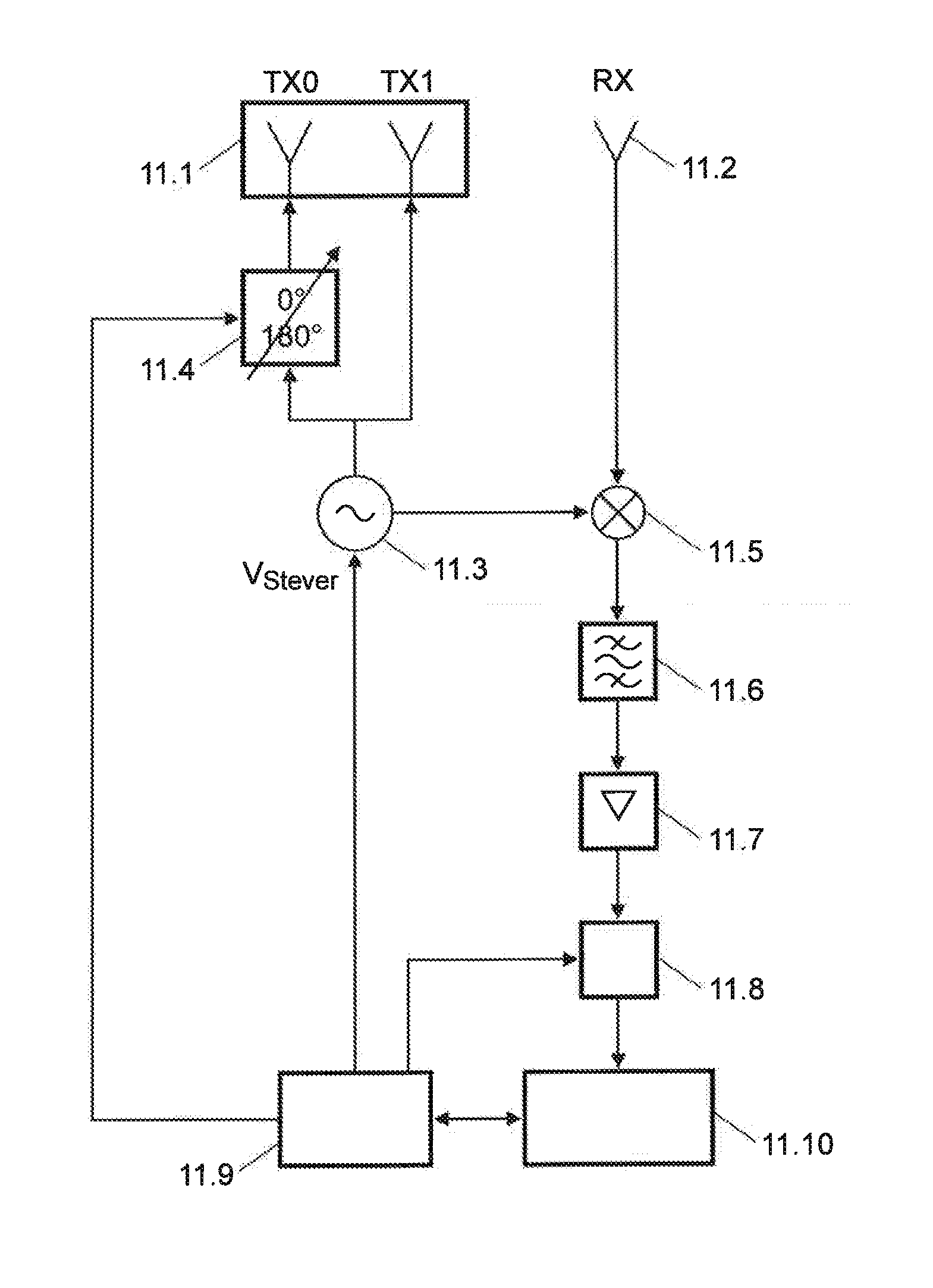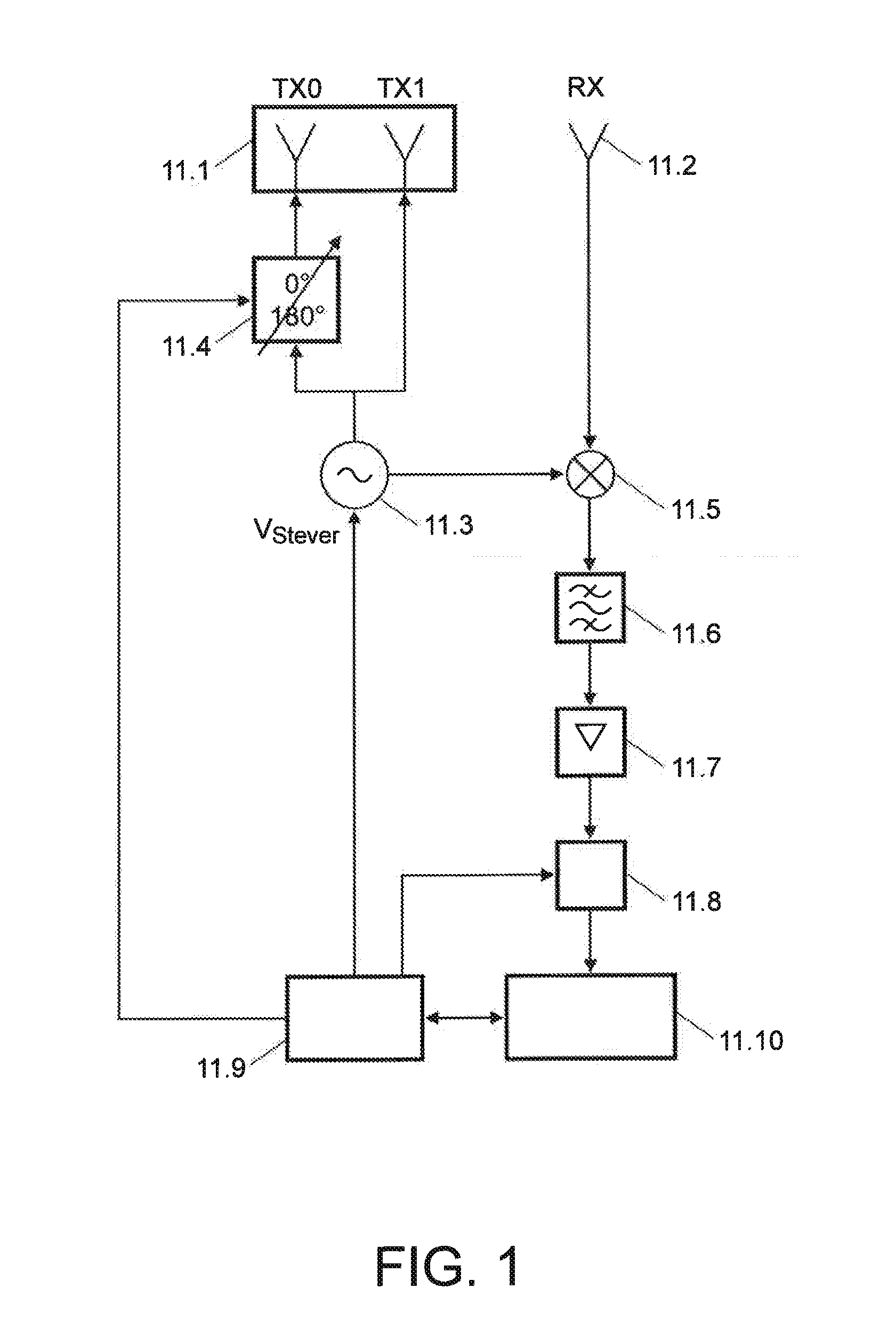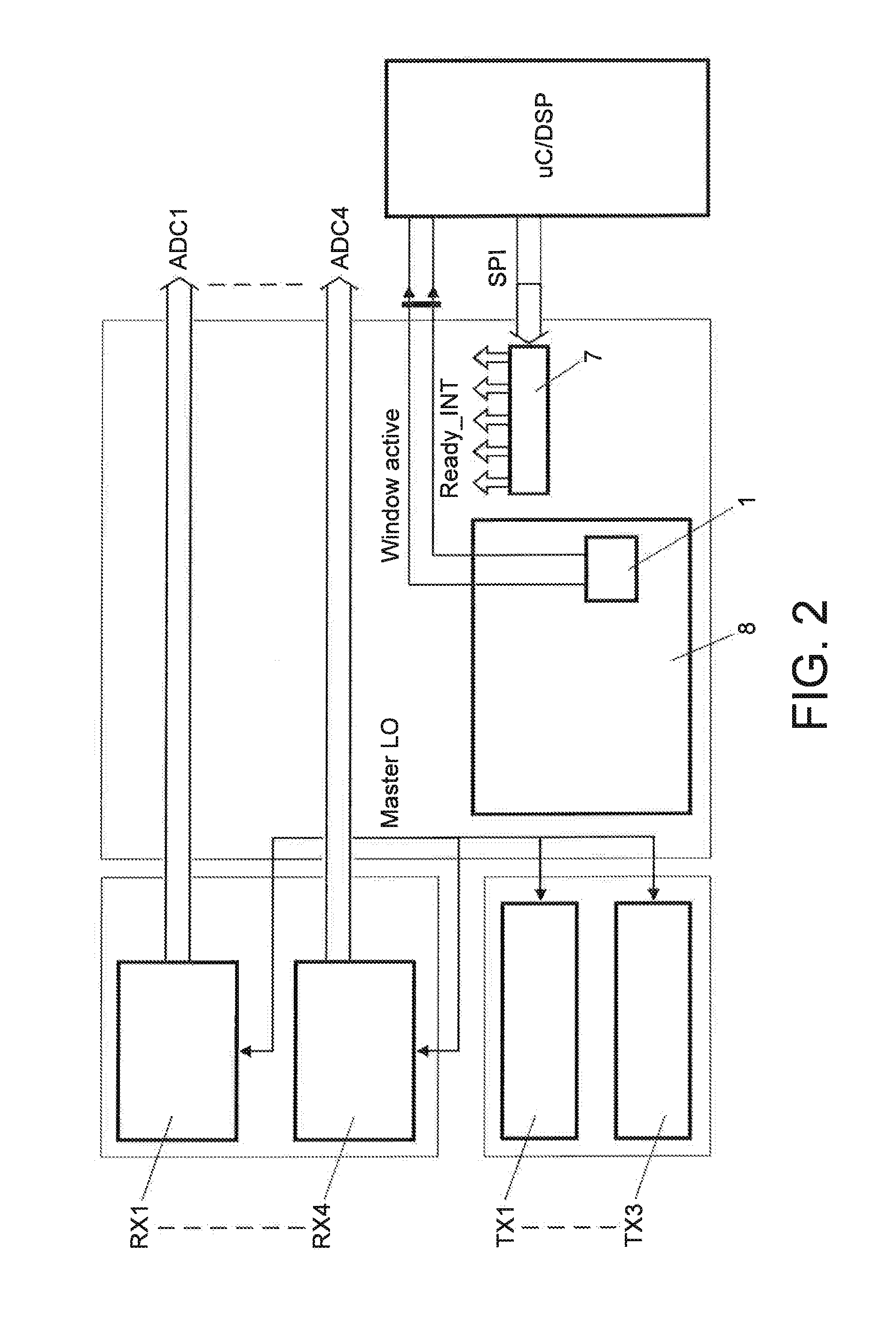Radar transceiver
a transceiver and radar technology, applied in the field of radar transceivers, can solve the problems of large sensor physical size, unsuitable short- and middle-range radar applications, and inability to accurately detect the chirp parameters, and achieve the effect of preventing accidental transmission of chirp parameters
- Summary
- Abstract
- Description
- Claims
- Application Information
AI Technical Summary
Benefits of technology
Problems solved by technology
Method used
Image
Examples
Embodiment Construction
[0067]FIG. 4 depicts a radar system according to an aspect of the application. The radar system comprises a set of transmitters TX1, . . . , TXn for transmitting radar chirps to targets, a set of receivers RX1, . . . , RXn for receiving reflected chirps from the targets and a timing engine 1 coupled to the set of transmitters TX1, . . . , TXn and to the set of receivers RX1, . . . , RXn. The timing engine 1 is adapted to transmit a first set of control signals to the set of transmitters TX1, . . . , TXn and to the set of receivers RX1, . . . , RXn. The timing engine 1 is further coupled to a computing unit 4, the timing engine 1 being adapted to receive a second set of control signals generated by the computing unit 4 and transmitted via a bus. The radar system further comprises a sweep control unit 2 coupled to the timing engine 1 and adapted to receive a first control signal and a second control signal from the timing engine 1, the first control signal indicating a start time of a...
PUM
 Login to View More
Login to View More Abstract
Description
Claims
Application Information
 Login to View More
Login to View More - R&D
- Intellectual Property
- Life Sciences
- Materials
- Tech Scout
- Unparalleled Data Quality
- Higher Quality Content
- 60% Fewer Hallucinations
Browse by: Latest US Patents, China's latest patents, Technical Efficacy Thesaurus, Application Domain, Technology Topic, Popular Technical Reports.
© 2025 PatSnap. All rights reserved.Legal|Privacy policy|Modern Slavery Act Transparency Statement|Sitemap|About US| Contact US: help@patsnap.com



